Build, Operate and Transfer -The Way Forward in Infrastructural Development-A Case Study Wellington-Waterloo-Masiaka Road
1.0 Introduction
One of the major differences between the developed world and the developing countries is in the level of their infrastructural development and effectiveness of service delivery. The funding of these infrastructural developments could not be handled by Government alone and the developed world has introduced the private sector in the area.
Sierra Leone is trying very hard to move in this direction but there is not enough education in the public domain about the great benefits and its funding in terms of the private companies funding the project and getting their money back. The reconstruction of the Wellington – Masiaka was the first of its kind in Sierra Leone in which the investor did and has to do the following:
- The contractor provided the funds for the reconstruction.
- The company undertook the construction.
- The company carries out basic routine maintenance.
- The company will continue to rehabilitate the road throughout the contractual period.
- The company collects tolls to offset their investment, maintenance, rehabilitation and operational costs.
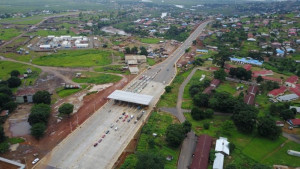
Aerial view of the Wellington-Waterloo-Masiaka Highway-Hastings Tollgate
2.0 Previous Condition of Road
The Wellington – Waterloo – Masiaka road had very serious challenges before it was reconstructed by the private partner among which are:
- Very high accident rate and most of which were fatal.
- Very high travel time as a result of congestion particularly from Waterloo-Freetown about three hours.
- The maintenance culture of the road was poor with blocked drains, flooding, bushy roads, potholes and various road defects.
- Possibility of head-on collision of vehicles was very high.
- Drivers and passengers’ confidence on this stretch was very low.
- Little or no lay-byes for vehicles to stop and pick-up goods and passengers.
- A two lane long bridge in the busy section of this road – the Orugu Bridge.
It was in the face of these challenges that Government entered into negotiation with the partner to provide not only the money but the construction, management and to recoup their money. The investor was also to train locals as a way of technology and skill transfer. This resulted in the training of fifty workers abroad.
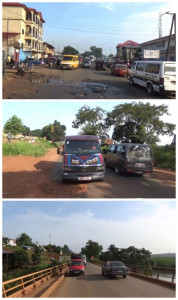
Road condition before reconstruction
3.0 Benefits
Some of the Benefits of the Road Development include the following:
- Taking the burden of providing huge cost for reconstruction from Government which had various financial challenges.
- This road has showcased major infrastructural development in Sierra Leone and thus the national image of the country on the world platform.
- The rehabilitation of this road such as overlay will leave the road in good condition after expiration of the contract thus provide a major benefit to the people of Sierra Leone.
- The reduction of both fatal and minor accidents on the stretch – lifesaving. The incident of head on collision of vehicles travelling in opposite direction which normally results in fatal accident is completely prevented. This is as a result of the four-lane road divided by a median along the entire road stretch.
- Reduction of the travel time by passengers, vehicles, drivers and private commuters by more than 2 hours which represent 200% reduction.
- Road development goes with growth in population and all corresponding requirements. There has been and is still continuing an upsurge of development and growth in the road corridor.
- New economic activities have sprung along the road corridor – the Songo industrial area with new factories, supermarkets, shops, fuel stations and other local businesses.
- There is high increase in the value of properties along the road corridor.
- Service delivery, such as health, accommodation, education, etc have increased along the road, thus reducing pressure on the inadequate services in the city of Freetown.
- Agricultural activities have not only increased in the road corridor but have influenced growth in the production of agricultural products.
- The number of trips generated by commercial vehicles has increased by more than three folds along the road corridor. This corresponds to more money in the coffer of commercial vehicle owners.
- The vehicle operating cost which includes fuel, tires, spare parts, lubricants etc. has reduced. In effect there is an increase in the life span of vehicles.
- The importation of spare parts, tires, lubricants, fuel, etc. are procured outside the country thus requiring foreign exchange. Reduction in the foreign exchange requirement in the transport industry is a great benefit to Government.
- The entire lifestyle of the population along the road corridor in terms of communication, accessing the city and other facilities in Freetown has changed for the better.
- The aesthetic of the corridor has improved and the impression to foreign visitor travelling by road is very high. Sister countries like Liberia have visited the investor and Government to learn from the Sierra Leone’s example, etc.
- The employment of over 1000 local workers during construction period and presently over 200 permanent local workers to operate and undertake maintenance on the highway.
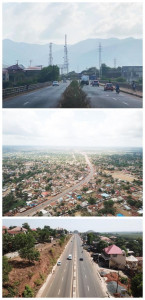
Road condition after reconstruction
4.0 Similar Examples in other Countries
The concept of BOT in the construction of roads could be found in the USA, China, Senegal, etc.
In the USA, most of the major federal highways are constructed, operated and maintained by the BOT arrangement and tolls are collected to not only get the investment cost but to cover maintenance, rehabilitation and operation. These toll charges are revised to ensure that the overall cost of the highway is recovered. It is a similar situation in China. In West Africa, Senegal stands out clearly in this direction of road infrastructural development. It should be made known that the highway in USA and other parts of the World have generated wealth and made them great coupled with other additional factors.
5.0 A Look at Some Trunk Roads
A brief comparison of the performance of the Wellington – Waterloo – Masiaka road to the Masiaka – Bo and Masiaka – Kono will clearly review the following:
- Wellington – Waterloo – Masiaka is regularly and promptly maintained compared to its adjacent highways leading to Bo and Kono because of limited funds availability to do prompt maintenance.
- The number of accidents and severity on the Wellington – Waterloo – Masiaka is far lower than those sister connecting highways. The overall road safety aspects follow the same pattern.
- Most major developments are more concentrated on the Wellington – Waterloo – Masiaka road corridor than that leading to Bo and Kono. It is easy to argue in terms of proximity to Freetown but it may be due to comfort and faster rate of travel also.
6.0 The Need to Increase the Cost of Toll
It is imperative that the cost of toll should be visited if this project is to remain not only viable but a leading example with fair play on the part of Government and the investor. This would be looked at in the face of the following:
- The cost of this project was calculated in United States Dollars at the time of signing the contract.
- The cost of toll is in Leones which was calculated base on the rate of the USD to Leones at the time. The rates at these two period are as follows:
- Signing of agreement of toll cost in July 2017. Exchange rate was one USD (USD1) equivalent to Leones Seven Thousand Five Hundred (Le7,500).
- Current exchange is one dollar (USD 1) equivalent to Leones Twenty Three Thousand Five Hundred Leones (Le23,500)
- The exchange rate has increased by about three folds.
- In a similar vein, the price of fuel which is a major item in the transport industry has gone through the following changes:
- Cost of fuel per liter in July 2017 was Le 6,000
- The current cost of fuel per liter is Le 30,000
- The cost has increased by about five (5) folds which is also a similar item in the transport sector.
- The average salary of each worker over the past five (5) years has increased by approximately Leones One Million Five Hundred Thousand (Le1, 500,000) per month. An additional advantage is that free Bus service is provided to convey the workers to work and back. It is very obvious from the above mentioned facts that it is fair and reasonable to increase the toll cost.
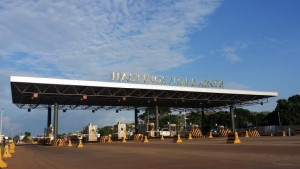
Hastings Tollgate

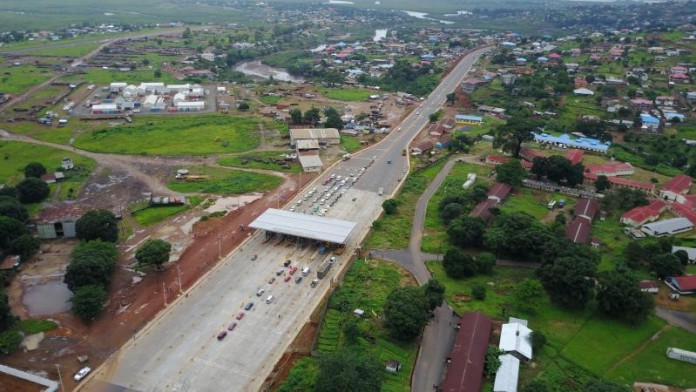



Is this a Calabash undertaking Pro-bono Voice of the Voiceless or a Paid Advertisement? I am assuming the Author’s gait (Walk the Talk) is not misguided if this is your Part 1 of this interesting Episode. Interestingly, why not lay out a Comparative Analysis of the Costs/Benefits Analysis-Side by Side for lay people like me and or the Less Educated Voiceless.